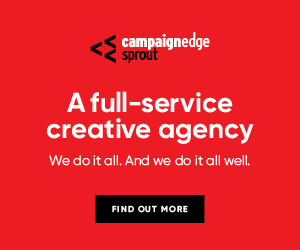SAFEGUARDING THE FUTURE
Anindilyakwa people call it “mamajinga” – black magic.


The people living on Groote Eylandt, the crab-shaped island off the Northern Territory’s east coast, have been using manganese as the jet black background for rock art for thousands of years. Now they plan to make it work for them in a more dramatic way – to help safeguard their future.
The Anindilyakwa Land Council, through its Royalty Development team, is working towards opening a manganese mine on the small Akwamburrkba Island, formerly known as Winchelsea, which sits a mere 15-minute boat ride from Groote.
“It will create jobs, training and a sufficient volume of income to build a sustainable future for the Groote Traditional Owners,” says land council chief executive Mark Hewitt. Land council chair Tony Wurramarrba says the story began in November 2016 when he joined the Chief Minister’s largest ever trade delegation to visit China. He was the only Aboriginal Territorian to attend.
Six weeks later, in response to an invitation to do business in a range of areas, including aquaculture, renewable energy, tourism and mining, four business leaders from Shandong Province visited Groote.
“Personally it seems like I am just doing what my ancestors have done before me,” says Mr Wurramarrba.
For 500 years, Anindilyakwa people exported the highly prized beche-de-mer or sea cucumber through Maccassan traders – it reached buyers as far away as China well before European contact.
“It presents a situation that was never anticipated in the design of the Land Rights Act,” says Mr Wurramarrba. “In this we will not just be passive royalty recipients from outside parties mining on our lands. We will instead be applying to the government to be joint venture partners with investors and the majority owners of our own mine. We will be in business with a potential world-class resource of great value to invest in our sustainable future when mining is gone.”
The land council has bought up numerous mining exploration licences and devised a careful, long-term economic plan around opening a new mine. Global resources company South32, which operates the huge Gemco manganese mine on Groote, is by far the largest contributor of mining royalties paid to the NT Government
Royalties paid directly to Groote Traditional Owners is spent on a wide range of Indigenous social and job-creation programs on the island, which is home to 2000 people from 14 clans.
“Royalties are used for critical infrastructure, such as roads and tracks to country, sport and recreation, and education,” says Mr Hewitt.
The money also supports two large programs:
- Community Support Program: this helps people in their day-to-day living
- Preserving Culture: this uses radio, film, men and women’s art, a language centre and a men’s shed to maintain Anindilyakwa culture
But South32 is scheduled to cease mining in about 12 years.
“Royalties will stop, so we have to find another source of income,” says Mr Hewitt. “But Groote has enough resources to set people up for the future.”
A mining Future Fund has been set up and now holds about $200 million – but accountants say it must be built up to $550 million so the interest can be used to keep important programs going when mining royalties come to an end.
“So we have to put an additional $350 million into that account over the next 12 years,” says Mr Hewitt.
The land council has formed a new company, Anindilyakwa Advancement Aboriginal Corporation, which through a joint venture with a Chinese investor, Aus-China Pty Ltd, is undertaking a $7 million mining exploration program. The JV is registered as Winchelsea Mining Pty Ltd. Twelve Traditional Owners of Akwamburrkba are working on the venture, including running an inter-island boat service for contracting civil works, drilling and geological crew.
Microgravity surveys are encouraging and early “pick and shovel” indications are that Akwamburrkba Island holds a significant occurrence of high-grade manganese. The valuable mineral, which is a so-called transition metal used to make steel, is visible on 30 percent of the surface of the 20 square kilometre area of the exploration lease. Drilling has commenced to quantify the resource for next stage investment. There are hopes that the mine will go into production within a few years.
“We would not mine in a rush,” says Mr Hewitt. “We would want the mine to last as long as possible to maximise employment – say, 10-15 years. It’s a very pristine place. There aren’t any cats or cane toads or invasive weeds. A year of very extensive environmental, cultural and geological surveying over both the wet and dry seasons have been completed. We’re very proud of our commitment to safety, environmental and cultural values. We particularly view biosecurity as critically important – we check every barge landing at Groote to make sure it’s not carrying pests, such as cane toads.”
More than 120 animal traps have been set to assess the animal population and check for the presence of endangered species.
Even during clearing before drilling trees will be harvested and the wood used to make roof trusses for a house-building program on Groote.
Akwamburrkba will be systematically rehabilitated during mining operations.
“Mining will be as low impact as possible; we want to protect the environment as much as possible.”
A rock jetty – costing $1.3 million – has been built so that equipment can be landed on the island.
If the project goes ahead, a loading dock will be probably be built on the other side of Akwamburrkba adjacent to deeper waters.
The mining project has an inspiring logo: Building Future Groote. TQ


